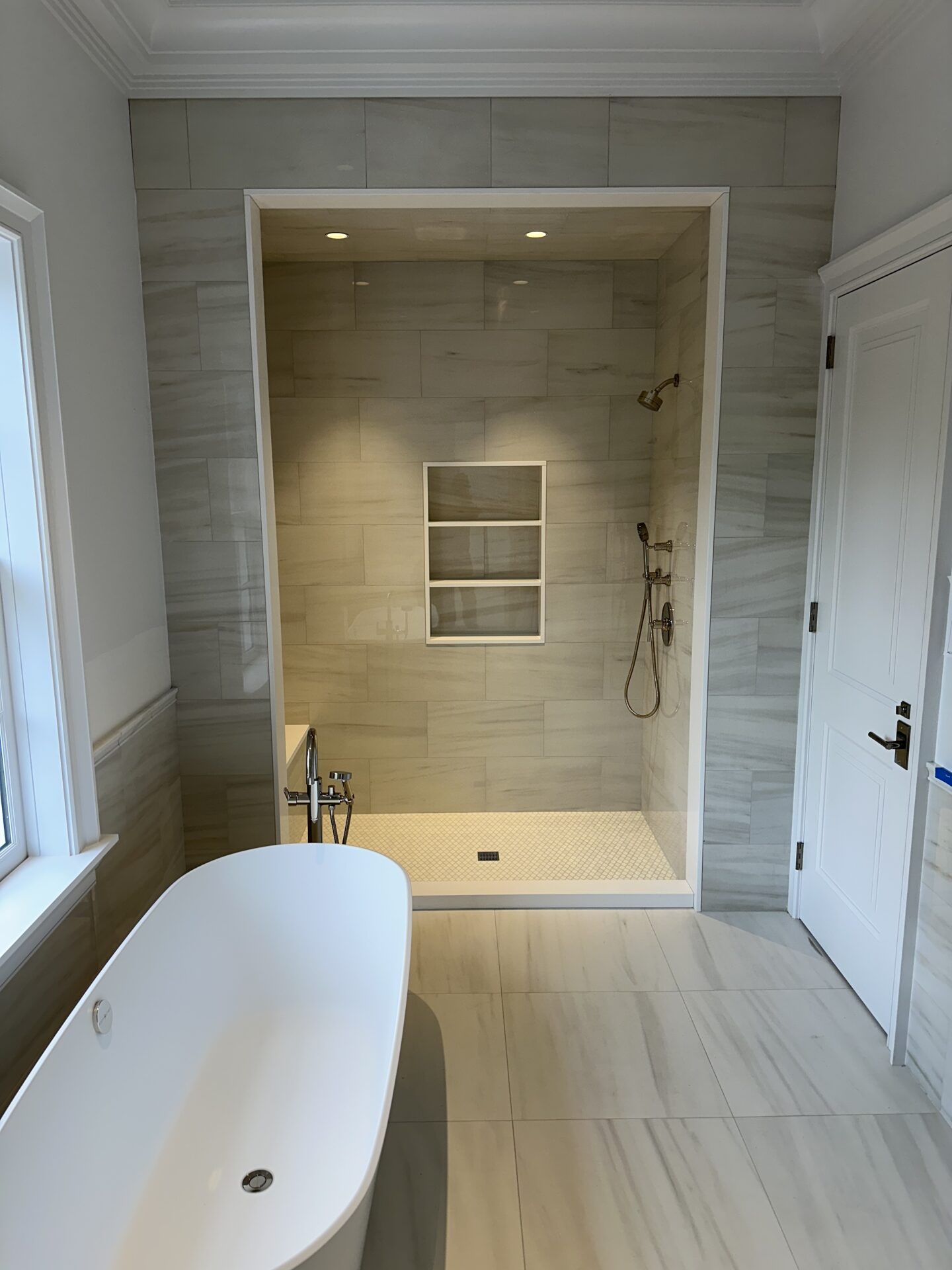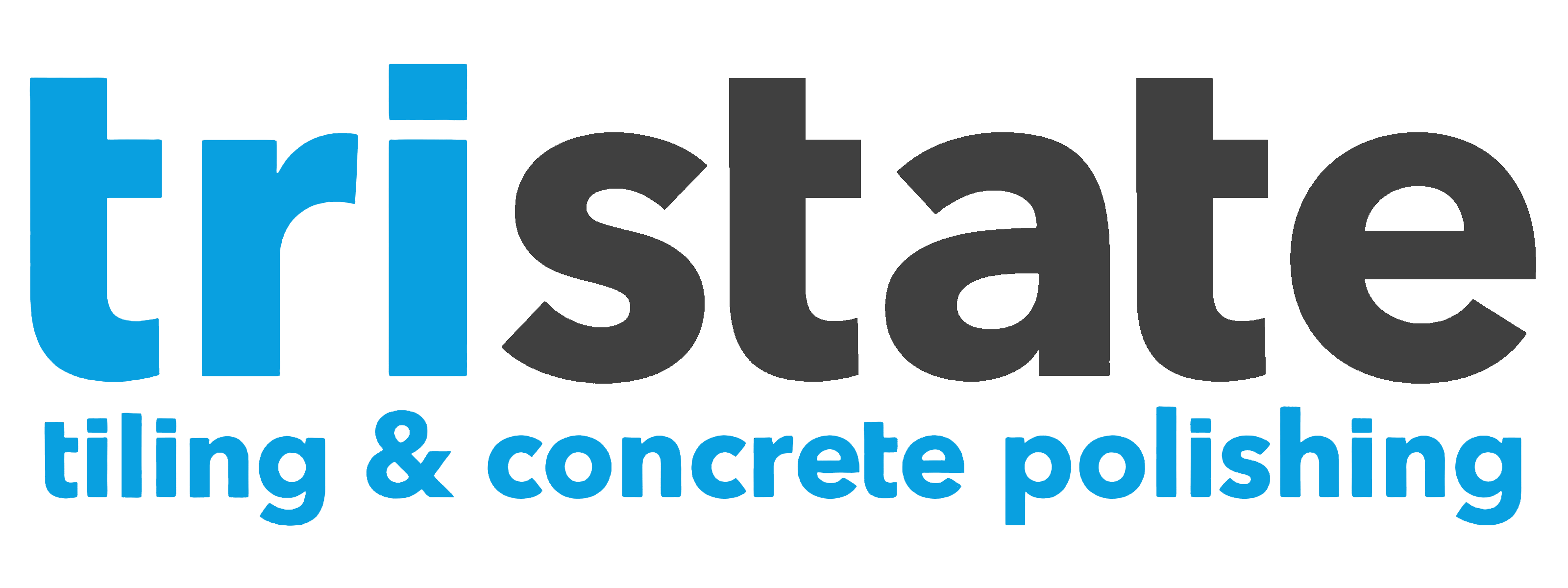
| Tile Type | Water Absorption | Freeze-Thaw Resistance | Maintenance Level | Cost Range |
|---|---|---|---|---|
| Porcelain | Less than 0.5% | Excellent | Low | $8-25/sq ft |
| Ceramic | 3-7% | Good (indoors) | Low-Medium | $3-15/sq ft |
| Natural Stone | Varies widely | Depends on type | High | $15-50+/sq ft |
Walk into any Connecticut tile showroom, and you’ll face a bewildering array of choices. Porcelain, ceramic, natural stone – they all look beautiful in the showroom, but which one will actually work best in your specific Connecticut home? The answer isn’t as simple as picking the prettiest option. Connecticut’s challenging four-season climate, with its freeze-thaw cycles, high humidity, and temperature extremes, demands careful consideration of each material’s performance characteristics.
Here’s the reality: choosing the wrong tile material can cost you thousands in premature replacements and repairs. Connecticut homeowners who select ceramic for outdoor applications often discover cracked tiles after their first winter. Those who choose high-maintenance natural stone for busy family bathrooms find themselves scrubbing stains and resealing constantly. But make the right choice, and your tiles will look beautiful and perform flawlessly for decades.
This comprehensive guide cuts through the marketing hype to give you the straight facts about how porcelain, ceramic, and natural stone tiles perform in real Connecticut homes. We’ll explore the pros and cons of each material, their ideal applications, and most importantly, which option makes the most sense for your specific project and lifestyle.
Porcelain Tiles: The Performance Champion
Think of porcelain as the overachiever of the tile world. Made from refined clay and fired at extremely high temperatures (over 2,000°F), porcelain tiles are dense, strong, and virtually impervious to water – making them ideal for Connecticut’s challenging climate.
Why Porcelain Excels in Connecticut
Connecticut’s freeze-thaw cycles are brutal on building materials, but porcelain laughs in the face of winter. With water absorption rates below 0.5%, there’s simply not enough moisture penetration to cause freeze-damage. This makes porcelain the go-to choice for:
- Outdoor patios and pool decks that need to survive Connecticut winters
- Bathroom floors and showers where moisture resistance is critical
- Kitchen backsplashes that face daily water exposure
- Entryways where wet shoes and de-icing salt create challenging conditions
Modern porcelain technology has also solved the aesthetic limitations of early porcelain tiles. Today’s porcelain can convincingly mimic wood, stone, concrete, and fabric textures. Large-format porcelain slabs create seamless looks that rival natural materials while providing superior performance.
Porcelain’s Potential Drawbacks
Nothing’s perfect, and porcelain has its limitations. The density that makes it so durable also makes it harder to cut and more expensive to install. DIY installation is challenging, and even professional installers need specialized equipment for cutting large-format porcelain.
Cost is another consideration. Quality porcelain tiles range from $8-25 per square foot, not including installation. However, many Connecticut homeowners find this investment pays off through decades of trouble-free performance and minimal maintenance requirements.
Connecticut Climate Fact: Porcelain’s freeze-thaw resistance makes it the only tile material recommended for all Connecticut outdoor applications, from coastal Fairfield County to inland Litchfield County’s harsh winters.
Ceramic Tiles: The Budget-Friendly Workhorse
Ceramic tiles are made from clay, sand, and other natural materials fired at lower temperatures than porcelain (around 1,800°F). This process creates a more porous material that’s lighter, easier to cut, and generally less expensive than porcelain.
Where Ceramic Shines
For many Connecticut indoor applications, ceramic provides excellent performance at attractive price points. Quality ceramic tiles work beautifully for:
- Indoor bathroom walls where water exposure is limited
- Kitchen backsplashes in areas without heavy moisture
- Interior hallways and living areas with moderate traffic
- Bedroom and office spaces where durability demands are lower
Ceramic’s lighter weight and easier workability make installation more straightforward and less expensive. Many ceramic tiles can be cut with standard tile saws, making them more DIY-friendly for experienced homeowners.
Ceramic’s Connecticut Limitations
Here’s where many Connecticut homeowners get into trouble: ceramic’s higher porosity (3-7% water absorption) makes it vulnerable to freeze-thaw damage. Using ceramic outdoors or in areas with potential freezing is asking for cracked tiles.
Even indoors, ceramic requires more careful maintenance in high-moisture areas. The higher porosity means ceramic is more susceptible to staining and may require sealing in certain applications.
Making Ceramic Work in Connecticut
Smart ceramic selection focuses on glaze quality and appropriate applications. High-quality glazed ceramic provides excellent stain resistance for indoor use, while proper installation with quality waterproofing extends performance in moisture-prone areas.
Professional material selection ensures ceramic tiles are specified only where they’ll perform well long-term, avoiding the premature failures that give ceramic a bad reputation.
Natural Stone: Timeless Beauty with Unique Demands
Natural stone tiles – marble, granite, limestone, travertine, slate – offer unmatched natural beauty and uniqueness. Every piece is different, creating installations that can’t be replicated with manufactured materials. For Connecticut’s many historic and luxury homes, natural stone provides authenticity and prestige that other materials can’t match.
Natural Stone’s Compelling Advantages
Beyond beauty, natural stone offers several practical benefits:
- Unique character: No two stone tiles are identical
- Value enhancement: Quality stone installations significantly increase property values
- Longevity: Properly maintained stone can last centuries
- Thermal properties: Stone stays cool in summer and works well with radiant heating
Connecticut’s architectural heritage makes natural stone particularly appropriate. Historic homes benefit from stone’s authentic period feel, while contemporary designs use stone to add warmth and natural texture.
The Reality of Stone Maintenance
Here’s what stone suppliers often downplay: natural stone requires ongoing maintenance that manufactured tiles don’t. Most natural stones are porous and require regular sealing to prevent staining. Some stones, like marble and limestone, are sensitive to acidic cleaners and foods.
Connecticut homeowners need to honestly assess their maintenance tolerance before choosing natural stone. A beautiful Carrara marble bathroom loses its appeal quickly if wine spills and soap scum create permanent stains.
Stone Selection for Connecticut Climate
Not all natural stones perform equally in Connecticut’s climate. Dense stones like granite and slate handle freeze-thaw cycles well, while softer stones like limestone and travertine need more protection.
Professional assessment considers both aesthetic goals and performance requirements. Expert installation services include proper sealing and maintenance guidance that protects stone investments long-term.
Maintenance Reality Check: Natural stone typically requires resealing every 1-3 years and careful cleaning with pH-neutral products. Factor these ongoing costs into your total investment calculation.
Application-Specific Recommendations for Connecticut Homes
The “best” tile material depends entirely on where and how you’re using it. Here’s how to match materials to specific Connecticut applications:
Bathroom Installations
Shower areas: Porcelain wins hands-down for shower floors and walls. Its water resistance prevents problems that plague other materials in high-moisture environments.
Bathroom floors: Porcelain or dense natural stone (granite, slate) work well. Avoid ceramic and soft stones that can’t handle moisture and potential freezing if heat fails during Connecticut winters.
Vanity areas: All materials work if properly sealed and maintained. Choose based on aesthetic preferences and maintenance tolerance.
Kitchen Applications
Floors: Porcelain provides the best combination of durability and stain resistance for busy kitchen floors. Natural stone works with diligent maintenance.
Backsplashes: All materials work well for backsplashes. Natural stone adds luxury but requires more care around acidic foods and cleaners.
Outdoor Applications
Patios and walkways: Porcelain only in Connecticut’s climate. Ceramic will crack, and most natural stones need careful selection and maintenance.
Pool areas: Porcelain or dense natural stone with proper sealing. Avoid ceramic entirely and soft stones that can’t handle pool chemicals and freeze-thaw cycles.
Cost Considerations: Total Ownership vs Initial Investment
Smart Connecticut homeowners look beyond initial tile costs to consider total ownership expenses over the installation’s lifetime.
Initial Cost Comparison
Ceramic: $3-15 per square foot plus installation ($8-15/sq ft) = $11-30 total
Porcelain: $8-25 per square foot plus installation ($10-18/sq ft) = $18-43 total
Natural Stone: $15-50+ per square foot plus installation ($12-25/sq ft) = $27-75+ total
Long-Term Cost Factors
These initial costs don’t tell the complete story. Consider ongoing expenses:
- Maintenance costs: Natural stone requires regular sealing and special cleaners
- Replacement likelihood: Ceramic may need premature replacement in challenging applications
- Property value impact: Quality porcelain and natural stone installations enhance resale values
- Insurance considerations: Some materials may affect coverage or claims processing
Professional Installation: Why It Matters More Than You Think
Even the best tile material will fail if improperly installed. Connecticut’s climate demands professional installation techniques that account for seasonal movement, moisture management, and thermal cycling.
Installation Complexity by Material
Ceramic: Moderate complexity, suitable for experienced DIY with proper tools and knowledge
Porcelain: High complexity, especially large-format tiles requiring specialized cutting and handling equipment
Natural Stone: Highest complexity, requiring expertise in material handling, sealing, and long-term maintenance planning
Connecticut-Specific Installation Challenges
Professional installers understand how Connecticut’s climate affects different materials and adjust installation techniques accordingly. This includes:
- Substrate preparation that accounts for seasonal movement
- Waterproofing systems designed for Connecticut’s moisture challenges
- Expansion joint placement that accommodates thermal cycling
- Sealing and protection appropriate for specific materials and applications
Professional design and installation ensures your material choice performs optimally while creating beautiful, functional spaces that enhance your Connecticut home.
Making Your Decision: A Practical Framework
Use this decision framework to choose the right material for your specific Connecticut project:
Step 1: Assess Your Application
- Indoor vs outdoor: Outdoor applications in Connecticut require porcelain or carefully selected stone
- Moisture exposure: High-moisture areas favor porcelain
- Traffic levels: High-traffic areas benefit from porcelain’s durability
- Freeze risk: Any area with potential freezing needs freeze-thaw resistant materials
Step 2: Consider Your Lifestyle
- Maintenance tolerance: Natural stone requires ongoing care
- Budget for total ownership: Include ongoing maintenance and potential replacement
- Aesthetic priorities: Natural stone offers uniqueness, porcelain offers consistency
- Timeline needs: Some materials have longer lead times or installation requirements
Step 3: Plan for the Future
- Resale considerations: Will your choice appeal to future buyers?
- Changing needs: Will maintenance requirements work as you age?
- Climate considerations: Are conditions likely to become more challenging?
Frequently Asked Questions
Which tile material works best for Connecticut basements prone to moisture?
Porcelain is the clear winner for basement applications due to its extremely low water absorption rate and resistance to humidity and potential flooding. Natural stone and ceramic are too porous for these challenging conditions.
Can I use ceramic tiles outdoors in Connecticut?
No, ceramic tiles will crack during Connecticut’s freeze-thaw cycles due to their higher water absorption rate (3-7%). Only porcelain or carefully selected natural stone should be used for outdoor applications in Connecticut’s climate.
How do I know if the extra cost of porcelain over ceramic is worth it?
Consider the application and your long-term plans. For high-moisture areas, outdoor applications, or high-traffic spaces, porcelain’s superior durability justifies the extra cost. For low-traffic indoor areas with minimal moisture exposure, quality ceramic may be sufficient.
Your Path to the Perfect Tile Choice
Choosing between porcelain, ceramic, and natural stone doesn’t have to be overwhelming. By understanding how each material performs in Connecticut’s unique climate and matching those characteristics to your specific application, lifestyle, and budget, you can make a confident decision that you’ll be happy with for decades.
Remember: there’s no universal “best” tile material. Porcelain excels in challenging applications, ceramic provides excellent value for appropriate uses, and natural stone offers unmatched beauty for those willing to provide proper care. The key is honest assessment of your needs and realistic expectations about maintenance and performance.
Most importantly, don’t do it alone. Professional guidance ensures you select not just beautiful tiles, but materials that will perform brilliantly in your specific Connecticut home for years to come. The difference between a tile installation that delights you daily and one that becomes a constant source of frustration often comes down to making the right material choice from the start.
